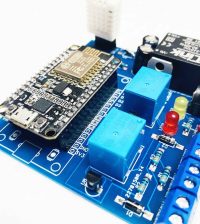- makeITcircular 2024 content launched – Part of Maker Faire Rome 2024Posted 2 weeks ago
- Application For Maker Faire Rome 2024: Deadline June 20thPosted 2 months ago
- Building a 3D Digital Clock with ArduinoPosted 7 months ago
- Creating a controller for Minecraft with realistic body movements using ArduinoPosted 7 months ago
- Snowflake with ArduinoPosted 8 months ago
- Holographic Christmas TreePosted 8 months ago
- Segstick: Build Your Own Self-Balancing Vehicle in Just 2 Days with ArduinoPosted 8 months ago
- ZSWatch: An Open-Source Smartwatch Project Based on the Zephyr Operating SystemPosted 9 months ago
- What is IoT and which devices to usePosted 9 months ago
- Maker Faire Rome Unveils Thrilling “Padel Smash Future” Pavilion for Sports EnthusiastsPosted 10 months ago
The advantages of RepRap 3D printing on farms
Dr. Joshua Pearce of the Department of Materials Science & Engineering at Michigan Technological University has written an article on the advantages that 3D printing offers farmers in developing countries. Pearce explains “the growing number of free and open source designs for tools applicable to farming,” and how they can offer serious economic benefits to farmers. Pearce limits himself to objects that can be printed with polylactic acid (PLA), as this resource is very affordable. He then reviews a series of examples, such as hand tools, food processing, water management, and more. Pearce also believes 3D printers can play a crucial role in organic food production:
While we’ve already seen numerous individual examples of what 3D printing technology can do for people in the developing regions of the world – remember the Wakati tent? – that wasn’t enough for dr. Joshua Pearce. Pearce is a 3D printing guru at the Department of Materials Science & Engineering at Michigan Technological University, and is known for his economic approach to the potential of 3D printing technology. In his latest paper, he turns to organic farming in third world countries and the economic advantages basic 3D printers offers to farmers.As he explains in his paper in the Organic Farming journal, entitled Applications of Open Source 3-D Printing on Small Farms, the growing number of free and open source designs for tools applicable to farming can offer serious economic benefits to farmers. ‘There is growing evidence that low-cost open-source 3-D printers can reduce costs by enabling distributed manufacturing of substitutes for both specialty equipment and conventional mass-manufactured products. It has also been hypothesized that this technology could assist sustainable development in rural communities that rely on small-scale organicagriculture,’ he writes.
















